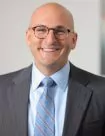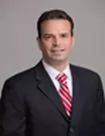Key Takeaways
- Based on recent oral argument in Ciminelli v. United States, the Supreme Court seems poised to continue a trend of narrowing the scope of federal criminal fraud statutes.
- The "right-to-control" theory relied on in the Second Circuit, whereby a fraudulent scheme is criminal so long as the victim is deprived of "potentially valuable economic information" concerning the victim's control of money or property, appears largely abandoned by the government.
- At argument, the justices — and the government — appeared to agree that such control is not "property" for purposes of Title 18. But thorny issues remain.
Background
In recent years, the U.S. Supreme Court has narrowed the scope of various federal criminal fraud statutes. For example, in McDonnell v. United States, the Court overturned the honest services fraud conviction of the former governor of Virginia because arranging a meeting, contacting a government official and hosting an event are not "official acts" subject to the bribery statute.1 In Kelly v. United States, the Court overturned the fraud convictions of aides to former New Jersey Governor Chris Christie because there was no property right of which the government was deprived when the aides shut down lanes on the George Washington Bridge for political retribution.2 And in a case we previously discussed,3 United States v. Blaszczak, the Court vacated the Second Circuit's affirmance of insider trading convictions under Kelly because a government agency's so-called pre-decisional information is not property under Title 18.4 The Supreme Court appears ready to continue this trend of narrowing criminal fraud statutes in a case that was recently argued, especially on the "property" conception at issue in Kelly and Blaszczak.
History of the Ciminelli Case
In Ciminelli v. United States, the Court heard oral argument on an appeal by a construction company executive who was convicted of wire fraud. Mr. Ciminelli was convicted for his participation in a bid-rigging scheme during the "Buffalo Billion" initiative to revitalize greater Buffalo, New York.5 He secretly collaborated with insiders at a nonprofit responsible for purchasing land and developing facilities as part of the initiative so that the request for proposal (RFP) process would favor the selection of his company as a "preferred developer."6
Though prosecutors charged Mr. Ciminelli with wire fraud, it was not a typical wire fraud charge. Rather than show a deprivation of money or tangible property, the government alleged that Mr. Ciminelli and his coconspirators deprived the nonprofit of potentially valuable information regarding the RFP process, in particular relating to Mr. Ciminelli's involvement with the nonprofit's insiders.7 In other words, the government relied on a right-to-control theory of loss based on the nonprofit's right to control its own funds and to administer a fair bidding process.8
After a jury convicted Mr. Ciminelli, the Second Circuit affirmed. Summarizing the right-to-control theory under Circuit precedent, the Second Circuit wrote that it requires "a showing that the defendant, through the withholding or inaccurate reporting of information that could impact on economic decisions, deprived some person or entity of potentially valuable economic information."9 A defendant like Mr. Ciminelli is not required to intend to cause financial loss.10 Rather, "the requisite intent is established if 'the defendant's misrepresentations foreseeably concealed economic risk or deprived the victim of the ability to make an informed economic decision.'"11
Before the Second Circuit, Mr. Ciminelli argued that the government had not proved "economic harm" because mere "preferred developer" status would not guarantee a contract for Mr. Ciminelli's employer, and because the government had not proved that another company would have been selected but for the scheme. The Second Circuit rejected both arguments. First, the Circuit pointed to Mr. Ciminelli's company "indisputably" having a "leg up" because of the "preferred developer" label.12 And second, Mr. Ciminelli deprived the nonprofit of "the potentially valuable economic information that would have resulted from a legitimate and competitive RFP process."13
Argument at the Supreme Court
In his briefs before the Supreme Court, Mr. Ciminelli attacked the propriety of the right-to-control theory altogether. At oral argument, the justices seemed to agree that the right-to-control theory was problematic, but their discussion did not appear to coalesce around a single solution.
From the outset, the justices' questioning suggested puzzlement and bemusement with the theory of the case. With the very first question at the oral argument, to Mr. Ciminelli's counsel, Justice Kagan wondered why the government hadn't proceeded with the more concrete "property," the hundreds of millions of dollars subject to the bidding process.14 Justice Kagan also expressed "surprise" to the deputy solicitor general that the government tried to "convince a jury that something called the right to control one's own assets is property" rather than "convince a jury that $750 million is property."15
Based on comments like Justice Barrett's that the right-to-control theory conflated materiality and intent,16 Justice Gorsuch posited possible "radical agreement that the Second Circuit misinterpreted the law."17 Justice Sotomayor seemingly spoke for all the justices when she admitted that she "totally remain[ed] confused" about how the right-to-control theory was workable.18
Interestingly, the government itself backed away from the right-to-control theory, including in its brief on the merits, where it opened the door to "further limitation" of property fraud statutes.19 The first question to the government, coming from Justice Thomas, was whether the government was "abandoning the Second Circuit's control theory."20 And the deputy solicitor general basically agreed, responding that "we would be fine with the Court explaining that that's not the right way for the Second Circuit to be going about thinking about these cases."21 The government instead argued that the right-to-control theory could be applicable to a more focused "core set of cases" in which the defendant "fraudulently induces a victim to enter into a transaction."22 As Justice Jackson observed, this suggested that the government could possibly argue that Mr. Ciminelli was still guilty even if the Supreme Court "determined that the [right-to-control theory] is not consistent with the law in some way."23
After a series of barbed questions for the government, Justice Kavanagh perhaps best summarized the broader issue with how the government has been approaching this right-to-control theory. Noting that "the government has been pushing this theory for several decades, and lots of people have been convicted under it," Justice Kavanagh called it "very problematic" that it took the government appearing under "the bright light of this Court, for the government to then say, actually, you know, that theory doesn't hold up."24 While the government disputed that characterization, such statements suggest that the Court is inclined to rein the government in here.
Conclusion
While the right-to-control theory seems unlikely to survive the Ciminelli appeal, the Supreme Court is faced with complicated questions about how to direct the lower courts generally and how Mr. Ciminelli's case should proceed specifically. We look forward to an answer to these questions and an assessment of the viability of the right-to-control theory in the new year, and we will continue to monitor how the Court interprets other novel and aggressive theories of criminal liability pursued by the government.
Footnotes
1. 579 U.S. 550 (2016).
2. 140 S. Ct. 1565 (2020).
4. See 141 S. Ct. 1040 (2021).
5. United States v. Percoco, 13 F.4th 158, 164-66 (2d Cir. 2021).
6. Id. at 166.
7. Id. at 171.
8. Id. at 170.
9. Id. (quoting United States v. Lebedev, 932 F.3d 40, 48 (2d Cir. 2019)).
10. Id.
11. Id. (quoting United States v. Binday, 804 F.3d 558, 579 (2d Cir. 2015)).
12. Id. at 171.
13. Id. at 171-72.
14. Tr. at 5:13-6:4.
15. Id. at 65:3-12.
16. Id. at 24:10-18.
17. Id. at 41:18-42:4.
18. Id. at 51:11-12.
19. Brief of Respondent United States, No. 21-1170 (U.S. Oct. 12, 2022), at 12 (conceding that as to the Second Circuit's right-to-control theory, "without further limitation, that conception could lead to overbroad results that would expand property fraud beyond its definition at common law and as Congress would have understood it").
20. Tr. at 33:1-2.
21. Id. at 33:5-8.
22. Brief of Respondent United States, No. 21-1170 (U.S. Oct. 12, 2022), at 12.
23. Tr. at 56:2-12.
24. Id. at 61:3-62:1.
The content of this article is intended to provide a general guide to the subject matter. Specialist advice should be sought about your specific circumstances.


